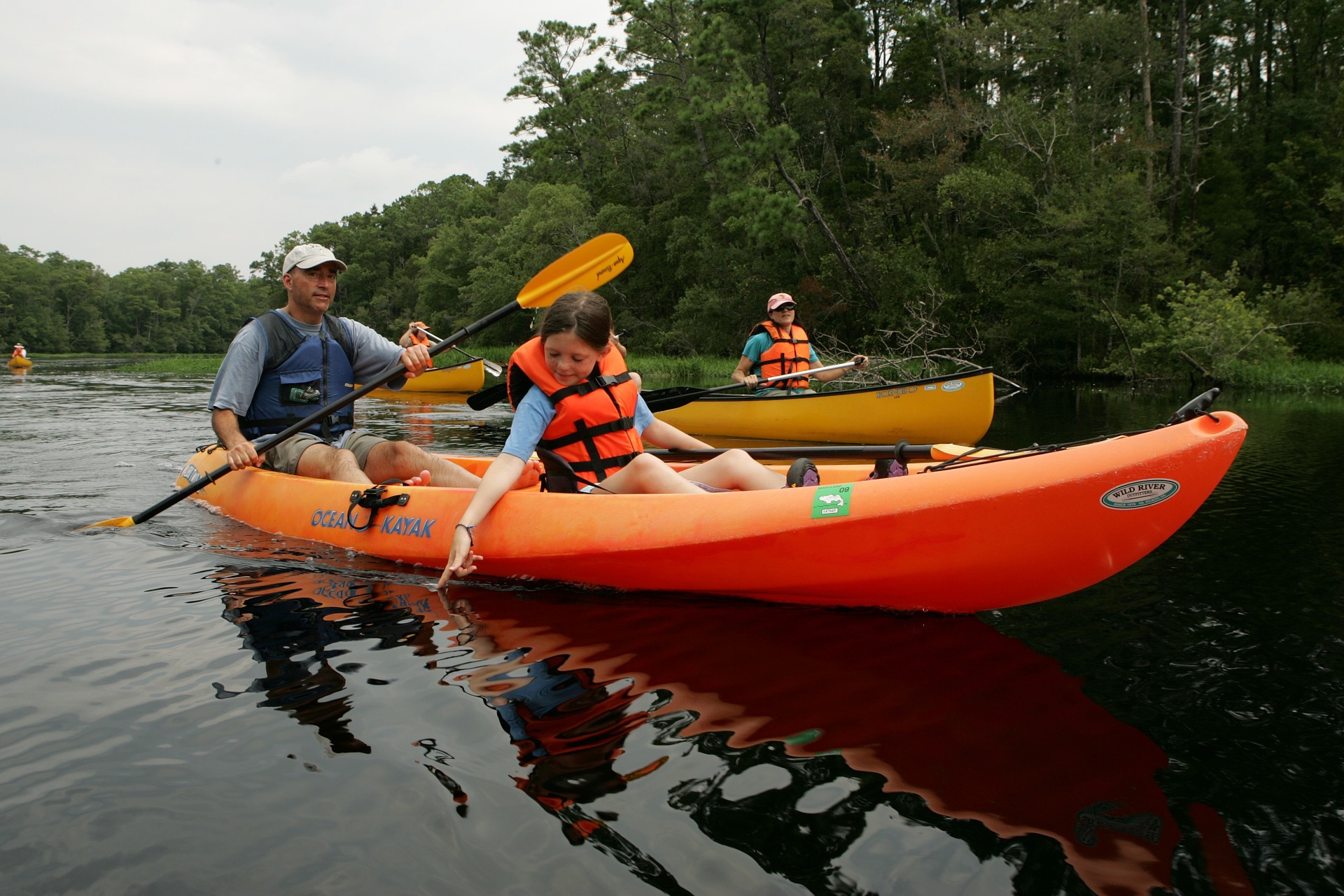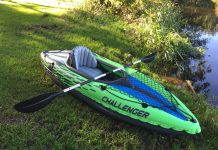
Canoes and kayaks are both small boats, they both use paddles, and they look pretty similar, right? If you’re new to paddle sports, you might be feeling a bit confused right now. And I wouldn’t blame you, to the untrained eye, kayaks and canoes are identical.
However, the boats have fundamental differences in their design and shape giving each their own advantages and disadvantages.
So, if you can’t decide between a kayak or canoe, we’ll explore the differences between the two and find out which one is best for you.
A Brief History of Kayaks and Canoes
Kayaks and canoes have both been around for thousands of years. Indigenous peoples living in the North Atlantic and the Arctic Circle used an early form of kayak for fishing and hunting.
In Inuit and Eskimo language, the word ‘Kayak’ means ‘hunter’s boat’ and these lightweight boats were ideally suited for use on inland waterways.

Canoes originate from the Caribbean Islands, where the Carib Indians used them as a sturdy means of transport between islands.
Whereas kayaks were built from driftwood, canoes were fashioned from dugout tree trunks and were therefore much stronger in open water.
What’s the Difference?
With the shell of modern kayaks and canoes made from plastic, the difference between the two is less obvious. At first glance, they look remarkably similar, but if you look closely, you will see that some key features make each boat unique.
Kayaks are primarily built for speed. They are smaller, lighter, and have closed decks (traditional sit-in kayaks anyway), so they take on less water. Open water kayaks have ‘skirts’ to protect the paddler and keep excess water out.
Canoes, on the other hand, are larger and heavier. The deck is open, and whereas kayaks are traditionally designed to hold one person, you can comfortably fit two to three people and their camping gear in a large canoe.

Canoes can easily fit multiple passengers
The paddling posture also varies. Large canoes have small seats that provide an elevated paddling position. You can also kneel when paddling a canoe. In a kayak, you sit on the bottom of the hull with your legs stretched out, so your center of balance is lower.
Paddling techniques, as well as the shape and style of the paddle, are different for each boat. Kayakers use double bladed paddles for speed, whereas canoeists use a single blade which conserves energy and allows you to travel further for longer.
When it comes to performance, canoes are much better suited to calm waters, whereas kayaks can fare well in rough weather conditions. Kayaks also tend to have better tracking than canoes and are much easier to keep in a straight line.
Here is a quick rundown of the pros and cons of each.
Kayaks
You may be familiar with recreational kayaks as they are often available at lakeside rental stores. However, kayaks come in all shapes and sizes to suit the various water bodies and activities they will be used for.
The length, width, and curvature of the hull changes with each type, as does the style of the deck and cockpit, and the onboard features.
Pros of Kayaks
- Kayaks are fast and highly maneuverable - you can even roll a kayak.
- Kayaks are ideal for open water and rough sea conditions because they don’t take on much water
- Kayaks have rudders to aid steering in strong currents and windy conditions
- Two bladed kayak paddles are easier for beginners to use
Cons of Kayaks
- Kayaks are generally smaller with more compact decks, so there is less room for extra equipment
- Kayaks are uncomfortable on long trips, which combined with limited storage space, makes them less suitable for extended camping trips
- Kayaks were not intended for two people, although there are now lots of two-man kayaks out there
- Kayaks tip over more easily than a canoe
Canoes
Canoes are popular with families as they can carry multiple passengers. They are readily available to hire at waterside locations and make for a fun family day out.
You need little (if any) experience to paddle a canoe, and as long as basic rules are followed, you’ll have a dry and comfortable trip.
Like kayaks, canoes also come in a variety of shapes and sizes depending on whether they’re used for fishing, transport, or watersports.
Their large size makes them practical and adaptable for anglers, hunters, and outdoor adventure enthusiasts.
Pros of Canoes
- There is plenty of room in a canoe, so you can move freely and pack lots of gear for multi-day camping trips
- Canoes are great if you want to share the paddling
- Canoes are relatively stable, and they don’t tip easily
- You are higher up in a canoe, so the water usually stays out
Cons of Canoes
- Canoes have a single paddle, so the paddling action is harder to learn
- Canoes are heavier and less maneuverable than kayaks
- If a canoe takes on too much water, it will sink
- It’s difficult to use a canoe in the open water or the ocean
Which is Easier to Learn?
Canoes tend to be bulkier and harder to maneuver. That being said, their larger size is an advantage if you’ve got an experienced partner who willing to ride with you and show you the ropes.
Having a buddy onboard is comforting for complete beginners who are anxious about boat riding and unsure of their skills.
Kayaks are much easier to paddle solo, thanks to being lighter and the use of two-bladed paddles.
Recreational kayaks are readily available to hire, and after a quick demonstration and 30 minutes on the water, even the most uncoordinated klutz will be able to paddle a kayak.
So, due to their ease of maneuverability, better stability on choppy water, and no requirement for a co-pilot, I would say that kayaks are easier for beginners to learn to paddle.

Let your child ride at the bow so you can keep an eye on him while he learns how to paddle
Which One is Right for You?
Canoe vs Kayak - there is no right or wrong answer to this question. Ask any two people and they would come up with a number of reasons why they prefer canoes over kayaks and vice versa.
If you often go on long camping trips or fancy taking your mates along for the ride, a large canoe is likely to be the better choice. But if you have a thirst for adventure, a kayak is going to satisfy your wild side. And if you plan on ocean kayaking, then a sit-in kayak should be your go-to choice.
So, back to our question: canoe or kayak? Well, it depends on where you plan on going, the activities you intend to do, and your skill level.
Your geographical area, i.e. whether you’ll be paddling the coastline or heading to inland waterways, also plays a major part in deciding which boat is best for you.
However, developments in boat technology often blur the differences between kayaks and canoes. Traditional features unique to each boat, such as canoes having an open deck, are now available in both canoes and kayaks.
In the end, it boils down to personal preference: Which one is most comfortable? What style do you like? And, most importantly, which one is cooler looking?
If you can, rent one of each for the day to get a proper feel for how they handle, and then you’ll know for sure what suits you best.
As an Amazon Associate, we earn from qualifying purchases. This is without any additional costs for the buyer but does support us in maintaining our website.



